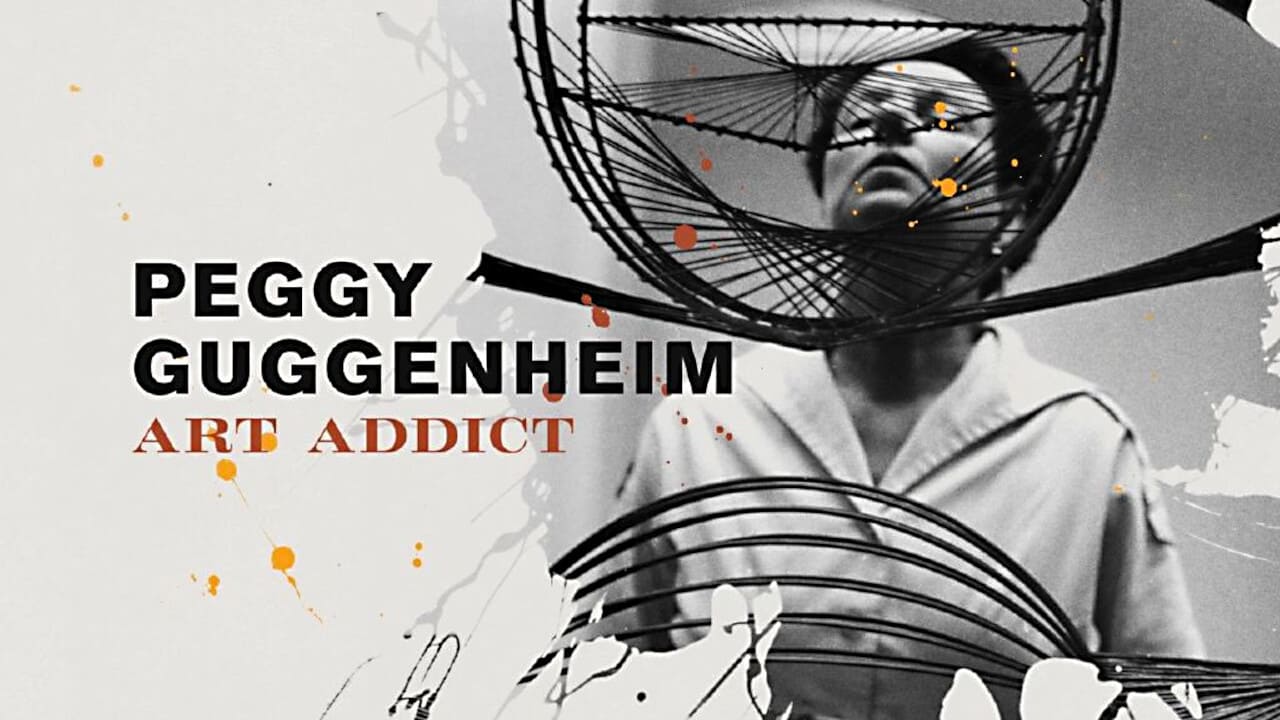What’s most magical (and it’s nothing less) about Peggy Guggenheim: Art Addict is discovering Guggenheim’s voice through her voice. During the making of this documentary about the socialite, bohemian and art collector (1898-1979), 100 hours of tapes were unearthed.
Art Addict is based on the last interviews she gave to Jacqueline Weld in 1978-79 for the biographer’s Peggy: The Wayward Guggenheim. The tape of the interviews, previously thought to have been lost, hadn’t been heard until now. It belongs in the Archives of American Art—Oral History Interviews, and is a historic find: informative, revealing and, above all, gripping. The new film has been directed by Lisa Immordino Vreeland, and produced by Stanley Buchthal, David Koh and Dan Braun.
Despite starting out with relatively little family support (she was known as the “poor Guggenheim”), Peggy Guggenheim did not hoard art and artists for personal gain. After launching her eponymous museum in Venice, she ended up with even less. She was a self-taught, materialistic ascetic, whose prized legacy, the collection she built and nurtured, remains intact.
Her achievements were manifold. She put on the first shows of Wassily Kandinsky, Clyfford Still, Robert Motherwell, Mark Rothko and Jackson Pollock—said by Guggenheim to be her greatest achievement after her collection—and gave more than 20 Pollocks to museums, in addition to what she kept. She was responsible for Lucian Freud’s first commercial gallery appearance and many, many more. Marcel Duchamp became a long-term mentor and adviser—contrast that with what passes for consultancy today.
A convention-busting figure in her capacity as unprecedented female collector/dealer/art promoter, her Art of This Century gallery, designed by Frederick Kiesler, which opened in New York in October 1942, was a paradigm shift in the history of exhibition venues. The gallery amounted to a fantastical, immersive experience integrating off-the-wall (literally) participatory display apparatuses with disparate elements such as a Lazy Susan device to view paintings on a rotating disc, and a chair with 18 functions—seating, storage device, plinth…. The gallery was a conceptual amusement park-cum-extreme provocation, unequalled since.
At a time when the international art world could fit in a teacup and resistance to contemporary art for sale was unimaginable by today’s orgiastic standards, the works alone weren’t enough to haul in an audience. What did was her flair for the absurd and show(wo)manship in a courageous, radical effort to make art more accessible. In doing so, she creatively destroyed the nascent gallery world before it could even stand on its feet.
She opened in London before New York (1938-39), as subsequently did Robert Fraser (1937-86), a pioneering dealer known as Groovy Bob, who introduced Warhol, Richard Hamilton, Ed Ruscha and Gilbert & George during the 60s, and whose sexual conquests (much like Guggenheim’s) are said to have stretched as far afield as Idi Amin Dada, the president of Uganda in the 70s.
Though kept hushed, at least superficially by Fraser (homosexuality was illegal in Britain until 1967), Guggenheim was in her own words “a nymphomaniac”. Her memoir, Out of This Century: Confessions of an Art Addict, was “all about fucking”. From Brancusi (she thought she’d get a better discount) to Pollock (which, unsurprisingly, didn’t end well) and everyone in between, she screwed her way through Modern art history. Except that the scorn and derision that were heaped on Guggenheim would never befall a man with the same… inclinations.
The power she came to wield in the art world was self-wrought but came at a high cost to her personal life. She was endlessly ridiculed. The same could be said of Zaha Hadid, frequently lampooned in the press despite her monumental achievements, another trailblazer in the still male-dominated field of architecture, with her forthrightness and success begrudged by many in and out of her profession.
Joseph Duveen (1869-1939) was a legendary dealer who famously sold to hold. To paraphrase Duveen, you trade art to make money but keep it to create wealth (if that’s your inclination). In the same vein Ernst Beyeler (1921-2010) parlayed his propitious flow of deals into Basel’s Beyeler Foundation and his legacy lives on. Yet Guggenheim cannily paid just $40,000 to amass her now multibillion-dollar collection (326 works by more than 100 artists).
More a cultural impresario in the manner of Ringling Bros or Barnum & Bailey Circus in her outfits and public roleplaying, Peggy G. was less in the mould of dealer/moguls such as Larry G. Today, the model has changed for the most part: art is seen as an asset class, with a dollop of social class but without the history class—if the market sinks like the Titanic (where Guggenheim’s father, Ben, met his fate), we’ll all be out of jobs. She brought a lifelong, obsessive, micro-focus on promoting art and artists to a practically unwilling audience that were too unknowing to realise this was something many would come to crave.
She invented the convergence of art and life with a stubborn intellectual curiosity that itself has become a curiosity in these quick-fix times where most newbies want it all and want it now.
Like her life—she died aged 81—the film is long but I could have sat through a part two. She was a bullheaded master who pulled herself up by her bootstraps and succeeded wildly other than as a dealer: she barely sold any art. She possessed meta-capacities to see and make her vision known in London, New York, Venice and beyond, cajoling and converting by passion and perseverance.
The artists and their art forged her identity. From the beginning she tirelessly fought—and it was undoubtedly a fight—to champion artists often in the face of scorn, and valiantly managed to keep her formidable collection intact when the Second World War broke out. It’s a unique and inspiring story. She was ahead of her time and still is, and she herself summed up her own life most succinctly: “It was all about art and love.” For some, it still is.
Kenny Schacter is an art dealer, curator, collector and writer based in London

